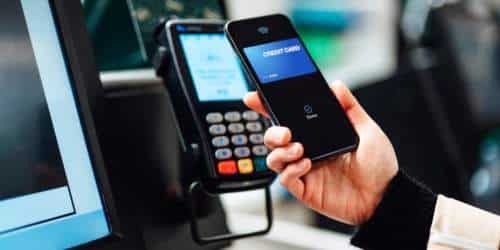As technology advances, products such as cell phones, smartwatches, computers, and tablets have become useful for doing a variety of routine chores. You may complete a plethora of daily tasks with only a few clicks or taps. This includes making purchases without the use of an actual credit card. Using a digital wallet (DW) is one way to accomplish this. A digital wallet allows you to pay in stores, online, or through an app with a single wave or tap of your smartphone. But how do you create your digital wallet, what are the types of digital wallets, what does the term mean for cryptocurrency, what are digital wallet apps, and which one should you choose? Keep reading to find out.
What Is a Digital Wallet?
A digital wallet is an online payment instrument or software application that functions as the electronic equivalent of a physical wallet. It is also known as an electronic wallet, e-wallet, or mobile wallet, and it allows users to securely store digital versions of payment methods such as credit and debit cards, gift cards, cryptocurrency, boarding passes, event tickets, passwords, and coupons to use with their smartphones or smartwatches on the go.
A digital wallet can be used to make purchases in stores, online, or through digital wallet apps. In-store transactions are typically made by tapping their contactless credit card or a payment-enabled smartphone or smartwatch over a contactless payment terminal.
How do Digital Wallets Work?
A digital wallet includes programs that you can install on your computer, phone, smartwatch, or other smart device. When you’re out and about, you can use most mobile wallets to pay by holding your device near a terminal with the contactless transaction symbol.
You may be needed to enter a passcode or authenticate using fingerprint or face recognition to complete the purchase. However, you can then use the app to make purchases, pay someone directly, or get tickets for events such as concerts or trips. You may be asked to sign in or provide a password for non-mobile digital wallets (buying from a laptop).
Types of Digital Wallets
Digital wallets are classified into three types: closed, semi-closed, and open.
- Closed wallet. This wallet is only available to a few people. A corporation offering goods and services, for example, could create a closed wallet solely for its consumers. This wallet holds the money from returns and cancellations, and users can only transact with the wallet’s issuer. A closed wallet is something like Amazon Pay.
- Semi-closed wallet. Users can conduct transactions at designated merchants and places using a semi-closed wallet. For security reasons, payment information is maintained in a centralized location, but a user may need to share a key or a password with another person before conducting a transaction. A semi-closed wallet is convenient to use because it stores numerous public addresses while keeping private keys offline.
- Open wallet. Online payment information can be managed and tracked using open wallets. An open wallet can be downloaded to any device or browser with an internet connection and works as a simple online application. Open wallets are cross-platform interoperable, allowing users to transact at any time and from any location.
How to Create a Digital Wallet
To create a digital wallet, you must first complete the following steps:
#1. Establish Your Goals And Features
The first step needed to create a digital wallet is to define your goals and features.
- What is the purpose of your digital wallet?
- Who is the target audience?
- What features will it have?
Will your digital wallet, for example, allow users to store multiple currencies, pay merchants, and transfer money to other users? Before proceeding, it is critical to fully comprehend your objectives and characteristics. This will assist you in determining the technology and resources required to create a digital wallet.
#2. Selecting a Platform and Technology
The following step in creating a digital wallet is to select a platform and technology for your digital wallet. There are a variety of possibilities, including iOS, Android, and web-based solutions. You must also select a programming language, such as Java, Python, or Swift.
When deciding on a platform and technology, keep your target audience and the devices they use in mind. For example, if your target audience mostly utilizes iOS devices, developing your DW as an iOS app makes sense. If you did not take the product discovery stage properly, this is an example of how bypassing it can result in a product with poor market fit and significant cost losses.
#3. Design A User Interface
After you’ve decided on a platform and technology, you’ll need to design a user interface (UI) for your digital wallet. The user interface (UI) is the front end of your DW, with which users will interact.
Consider this: 52% of users believe that a bad mobile experience makes them lose faith in an app. This is why hiring a competent UX/UI designer is critical.
Your user interface should be simple and straightforward. Users should be able to rapidly view account information, make payments, and transfer funds. Consider utilizing a minimalist design with simple, clear icons and buttons.
#4. Include Payment Gateways
The following stage will be to incorporate payment gateways into your DW. Users can use payment gateways to make payments with their credit card, debit card, or bank account.
Several payment gateways are available, including:
- PayPal;
- Stripe;
- Braintree.
Because users will be entrusting their financial information to your digital wallet, it is critical to select a secure and reliable payment gateway.
#5. Put Security Measures in Place
When it comes to financial products, security is a primary consideration, and digital wallets are no different. To safeguard user data and avoid fraud, you’ll need to put in place a number of security measures.
Implement two-factor authentication, which requires users to input a second form of authentication before accessing their account, such as a code delivered to their phone.
Biometric authentication, such as fingerprint or facial recognition, should be used.
Face ID on Android, for example, does not give complete protection and is easily hacked. So, if you want to create a DW on Android, I recommend using a fingerprint scanner instead.
#6. Put Your Digital Wallet To The Test
Before you launch your DW, you should thoroughly test it to ensure that it works properly and is user-friendly. This involves security vulnerability testing as well as usability and performance testing.
You’re ready to launch your DW once you’ve finished testing! Every entrepreneur understands that this is where the real work begins. During the first few weeks, you must deal with any bugs or crashes that occur. When things settle down, you maintain your app, collect feedback, constantly improve it, and release new app versions.
The Best Digital Wallet Apps
If you want to make your life easier, you should read the following entries. You can expect remarkable convenience for personal or commercial use. So get rid of your physical wallet and replace it with a digital wallet.
#1. Apple Pay
Apply Pay enables customers to make secure and contactless payments using iOS, iPadOS, and watchOS apps, as well as websites via the Safari browser. Apple Cash, as well as any debit or credit card number, added to a customer’s Apple Wallet, can be used to make Apple Pay transactions. Apple Pay payments are validated using a passcode set on the device and, optionally, touch or Face ID.
#2. Google Wallet
Although Google Wallet has largely replaced Google Pay in many countries, the two apps remain distinct. Google Wallet makes use of NFC technology, allowing users to pay with their fingerprints or passwords. Customers can use Google Wallet to make secure and fast digital payments by touching their phone on any NFC-enabled POS terminal during checkout by using NFC in conjunction with cloud technology.
#3. Samsung Wallet
Samsung Pay was the previous name for Samsung Wallet. It was re-released in July 2022 and integrated with Samsung Pay and Samsung Pass. It transfers card information to an NFC-enabled payment terminal using NFC technology. However, it has limited functionality because it is only compatible with Samsung devices and is not yet configured to manage payments on websites.
#4. PayPal
PayPal is a peer-to-peer (P2P) money transfer service that is widely used for online and in-app purchases, personal money transactions, and e-commerce. Individuals can transfer funds to one another using a linked debit or credit card or a bank account. Users can also connect PayPal to other digital wallets, such as Apple Pay.
#5. Venmo
Venmo is a PayPal subsidiary that began as a money-sharing software. It made it easier to ask for money from friends, split bills, or split rent with roommates. Venmo has evolved into a full-service financial platform that allows users to spend online and in-store at participating businesses.
Pros and Cons of Digital Wallets
The following are some of the advantages and disadvantages of using a digital wallet:
Pros:
- Convenience: Because it is accessible from your device, it is more convenient to carry around and frees up pocket space. You can also store several sorts of cards in the digital wallet.
- Extra backup: If you forget your wallet, you can still make payments at most retailers.
- Safety: Because digital payments include data encryption and tokenization, they are safer in many respects than traditional debit or credit card transactions.
Cons:
- There are certain restrictions on where you can use it: Not every retailer or individual to whom you want to transfer money accepts digital wallet payments, or may not have the technology in place to do so.
- It is dependent on your device: If the device on which your digital wallet is kept runs out of battery or you lose access to it for whatever reason, you will also lose access to the digital wallet.
Digital Wallet Credit Card
Digital wallets, which range from popular choices like PayPal to merchant apps that allow shoppers to use a saved card via an app, provide a convenient and contactless way to use credit cards. And, these days, most credit cards continue to earn their regular rewards when used with any of the top mobile wallets, such as Apple Pay, Google Pay, and Samsung Pay.
In fact, some cards actively reward you for using a digital wallet, while others have features or benefits that make it easier to use digital wallets.
Here are our top recommendations for the best credit cards for digital wallets, as well as which card you should use with your preferred DW:
- U.S. Bank Altitude™ Reserve Visa Infinite® Card
- Kroger Rewards World Elite Mastercard
- PayPal Cashback Mastercard®
- Chase Freedom Flex℠
- Apple Card
- Venmo Credit Card
- Capital One® Walmart Rewards™ Mastercard®
What is a Digital Wallet for Cryptocurrency?
While digital wallets are essentially an electronic version of what you’d carry in a physical wallet, crypto wallets are distinct: They keep the keys required to buy and sell cryptocurrency. To oversimplify, the primary purpose of a digital wallet is to pay for ordinary products, hence cryptocurrency holders often utilize a crypto wallet to purchase cryptocurrencies.
However, there are some similarities between mobile and cryptocurrency wallets. A crypto wallet, like mobile wallets, can be used to pay for goods or services at locations that accept cryptocurrencies. And both wallets are far more secure than carrying a credit card with you.
However, all of the information required for either type of wallet is available online and thus vulnerable to hacking on some level. Cards and accounts in a digital wallet are often FDIC-insured or have some level of fraud protection provided by the financial institution, but Bitcoin remains mostly unregulated.
How Do I Get a Digital Wallet?
To begin, locate your smartphone’s wallet app (most are already installed), then enter your credit or debit card information. You can store several cards in the app and set your default payment method. Your Digital Wallet cannot be used to make a payment unless you authenticate it.
What is Meant by Digital Wallet?
Digital wallets are online payment methods that typically take the shape of an app. To make payments, you don’t need to enter your card details or carry a physical card because the wallet securely keeps virtual versions of debit and credit cards.
What are the Digital Wallets in Nigeria?
Paga, Opay, Get Barter, Chippercash, and palm credit are examples of mobile wallets in Nigeria.
Is a Crypto Wallet a Digital Wallet?
Cold wallets are a sort of crypto wallet that stores digital cryptocurrency on a platform that is not linked to the internet, protecting it from hackers. A paper wallet is a method of storing bitcoins that is not accessible online. The private keys and Bitcoin addresses are printed on paper during the process.
Can I Withdraw Money From my Digital Wallet?
When you add your debit card to your Digital Wallet, you can obtain cash using your phone.
Can my Phone be a Digital Wallet?
A mobile wallet can be accessed via a variety of smartphone apps. Many companies, including Apple and Android, provide mobile wallets. Most credit card companies also have their own versions, making it simple to link your cards and accounts.
Is PayPal a Digital Wallet?
Yes. PayPal, Apple Pay®, Google Pay, Samsung Pay, Alipay, and WeChat Pay are all popular digital wallet choices.
Is a Digital Wallet a Bank Account?
You can use a digital wallet instead of a bank account, but there are several important considerations. A digital wallet is just a repository for all of your payment cards, but it could also be a location to keep cash, such as your Apple Cash or Venmo balances.
Which is Best Digital Wallet?
The Best Digital Wallet Apps include:
- Apple Pay Wallet.
- Google Pay.
- Samsung Pay.
- Venmo Wallet.
- Zelle Wallet.
- Cash App Wallet.
What is the Difference Between Bank Account and Digital Wallet?
Net banking is a banking service that allows users to view their accounts and conduct transactions online. A digital wallet, on the other hand, is a type of electronic payment system that allows clients to securely store and make payments using their payment information.
In Conclusion
Digital wallets provide users with a quick, fast, and secure method for making virtual payments, purchasing tickets, gift cards, and other items. While it may not be time to throw away your physical wallet just yet, we will most likely see an increase in adoption by US consumers and merchants as consumers gain comfort with contactless and digital financial services.
- TOP DIGITAL WALLETS IN 2023: How They Work
- Important Things to Know About Bitcoin Wallet
- What is a Crypto Wallet? Types & How to Use them
- MOBILE WALLET: Best Mobile Wallets & How to Use It
- Trust Wallet: Overview, Tokens, How to Use Trust Wallet
- COVER LETTER EMAIL: Sample, Formats and How to Write
- SYSTEMS ADMINISTRATOR SALARY: Average Systems Administrator Salary by State






